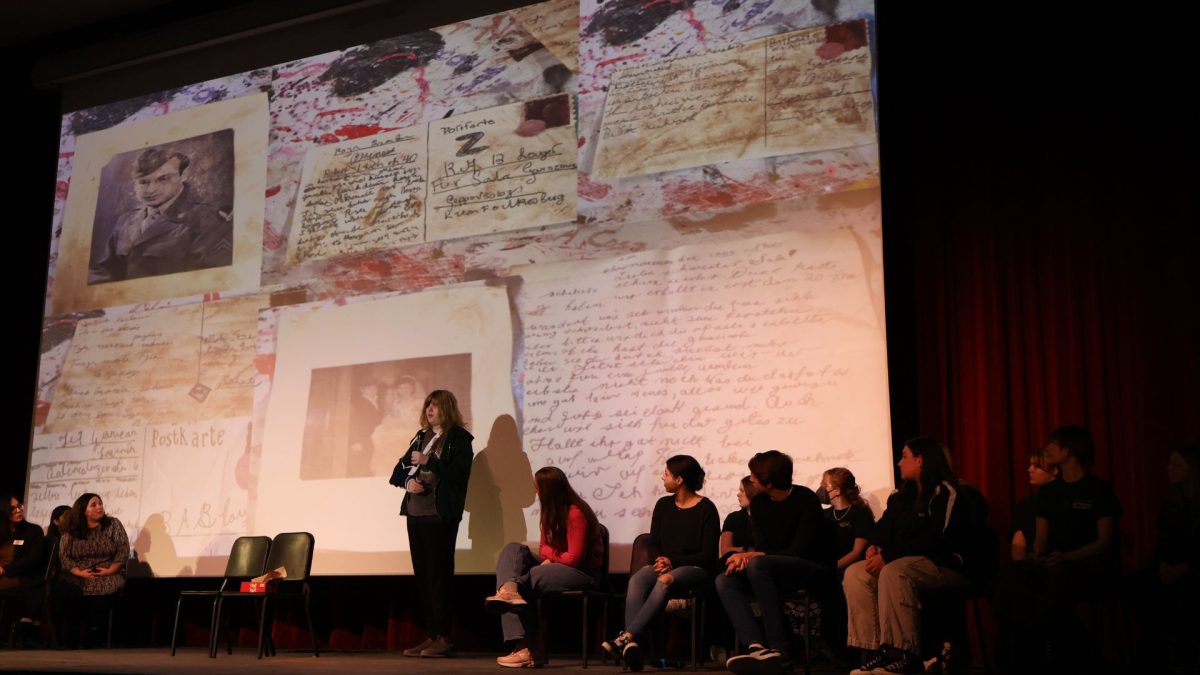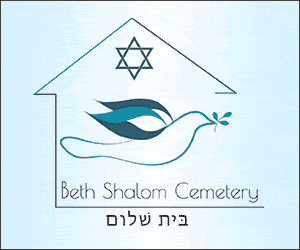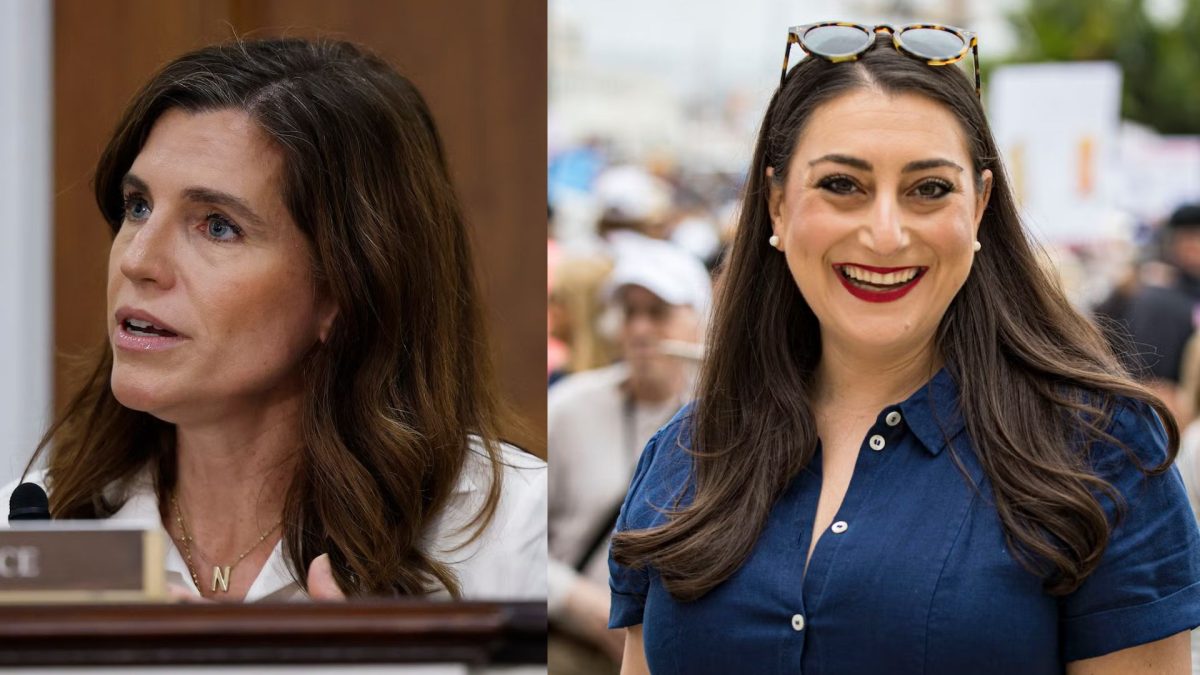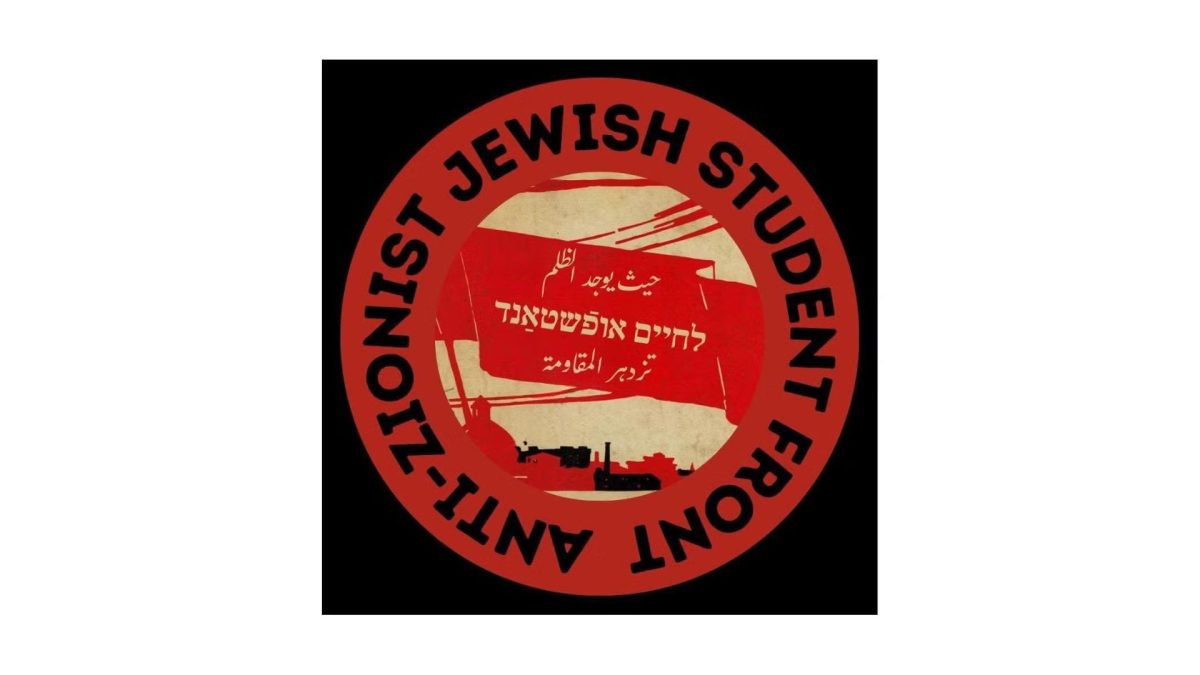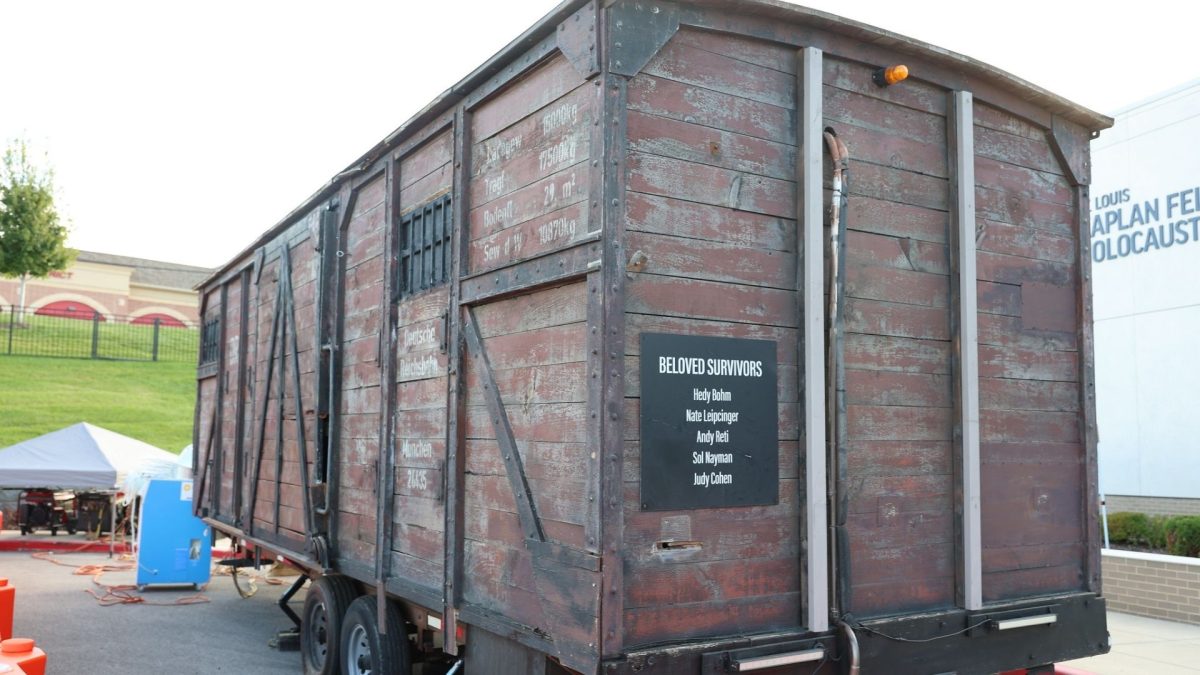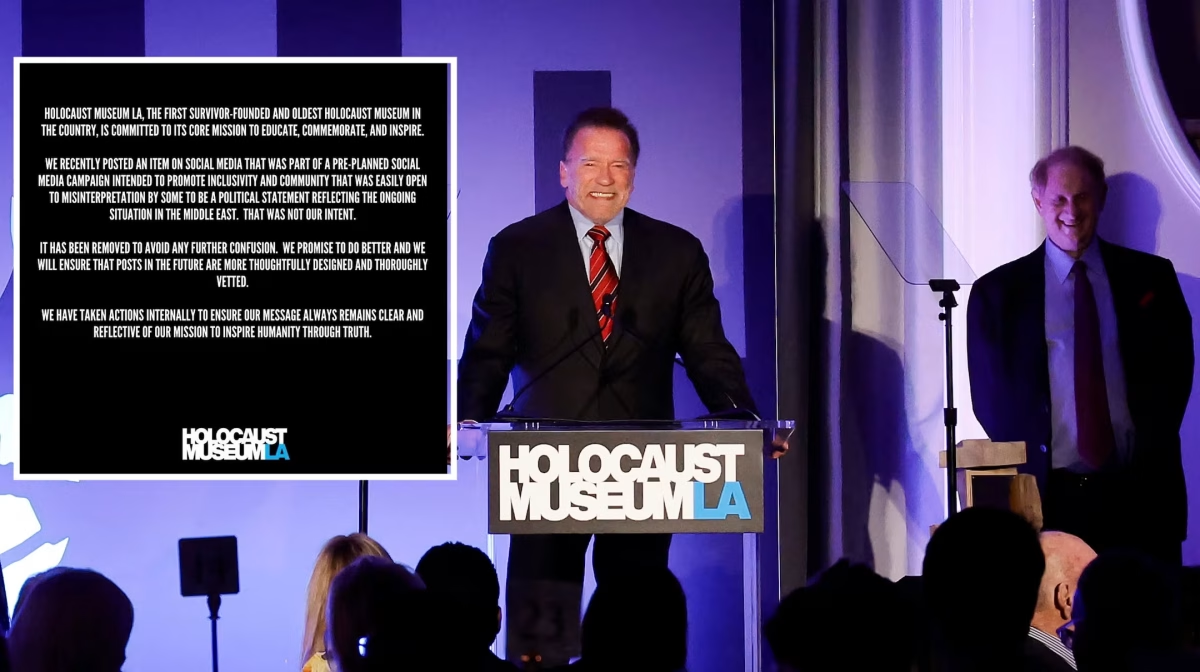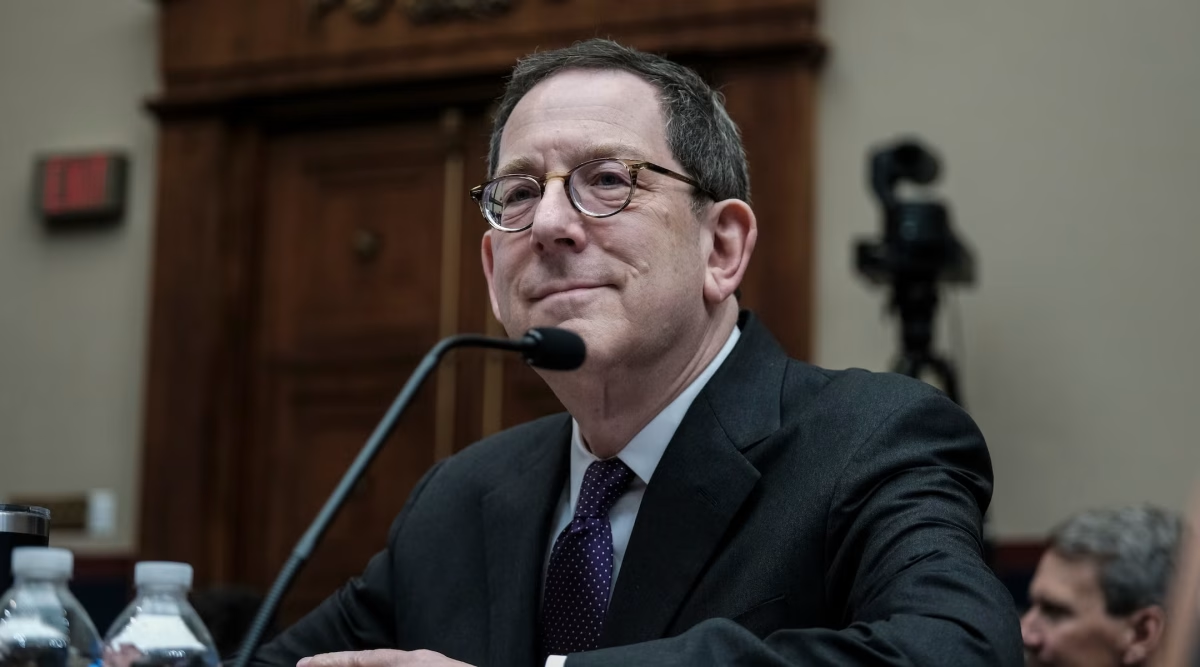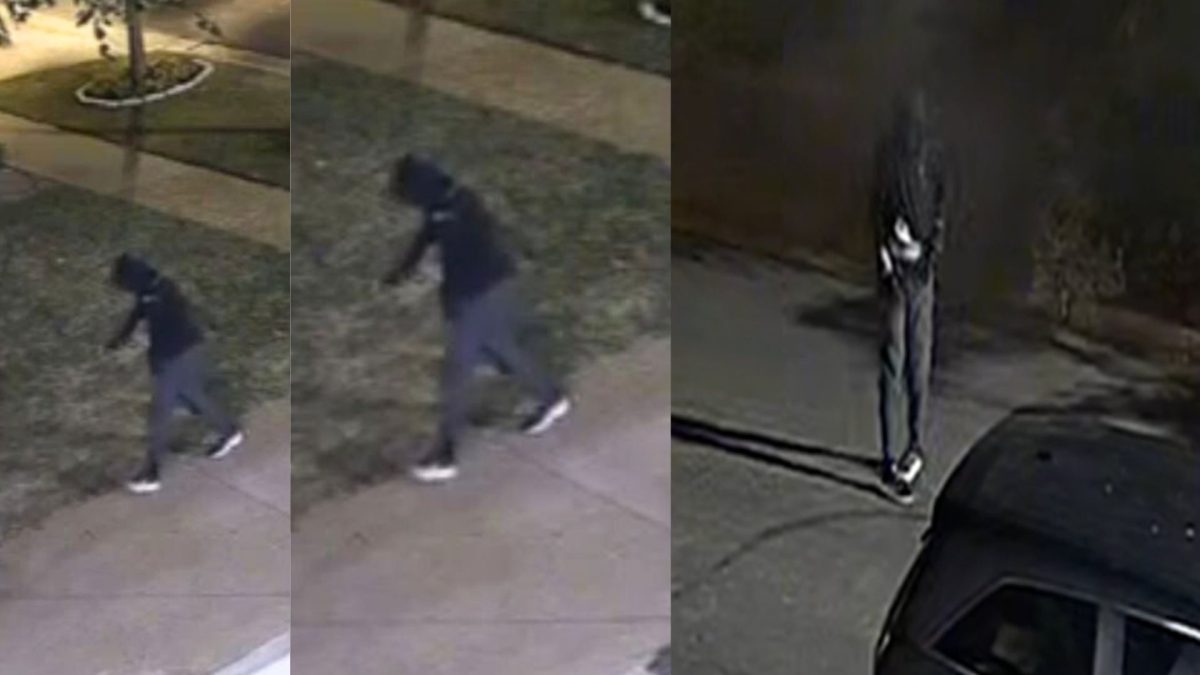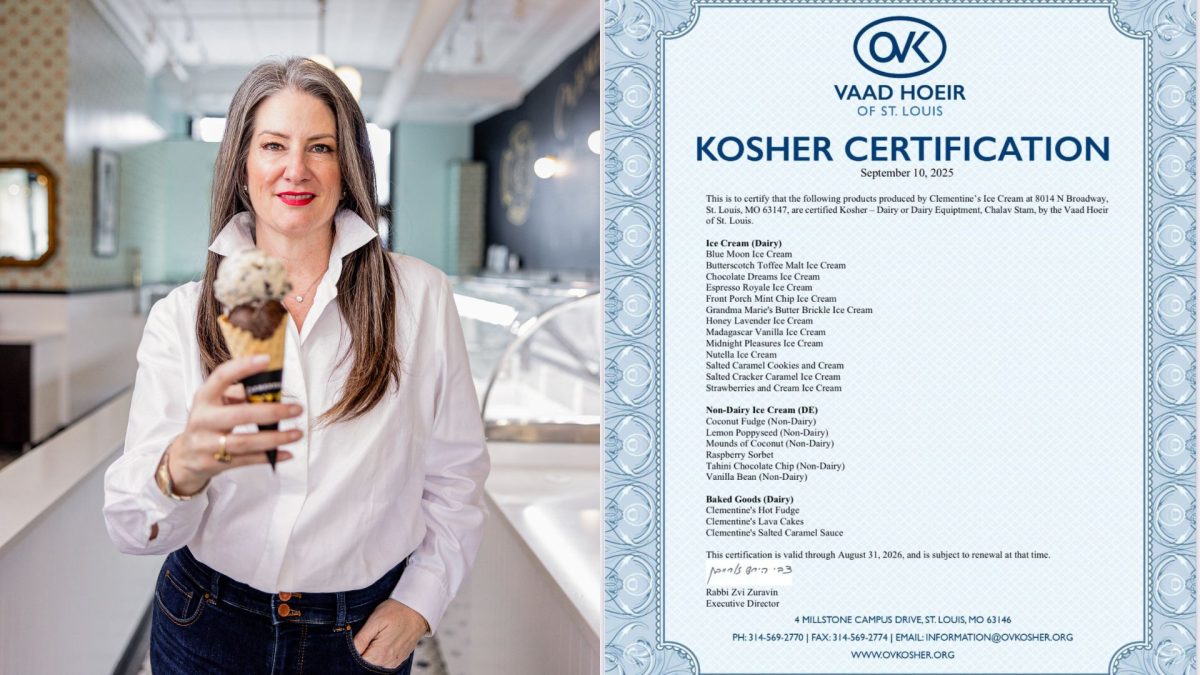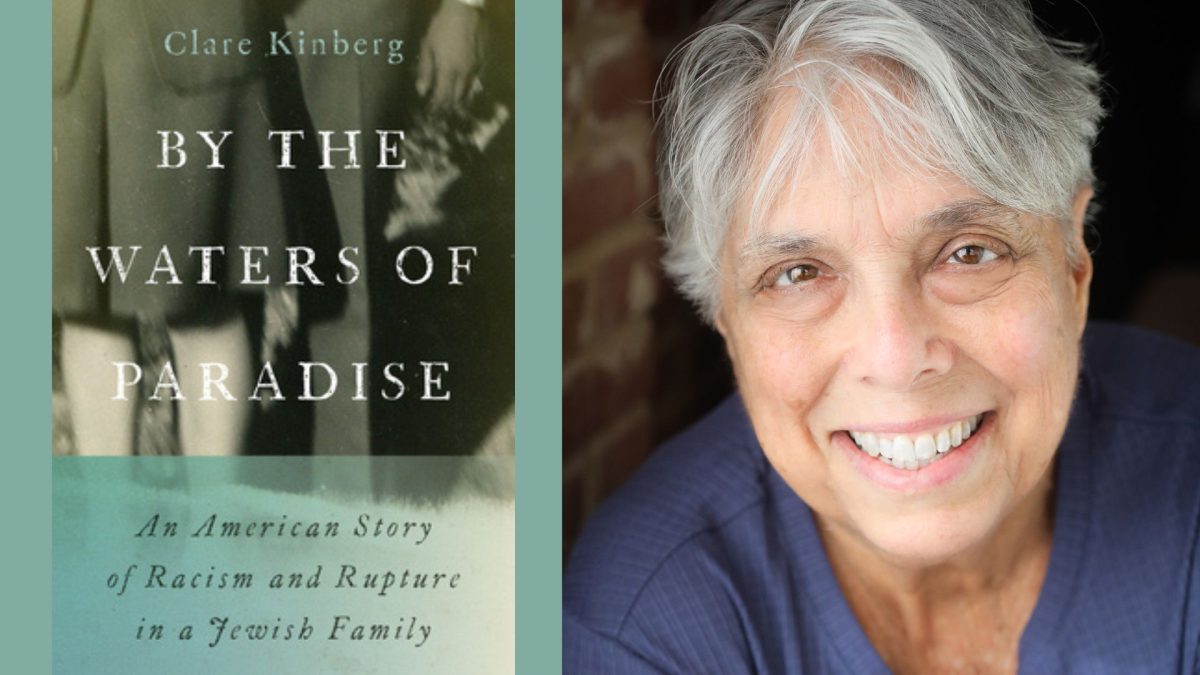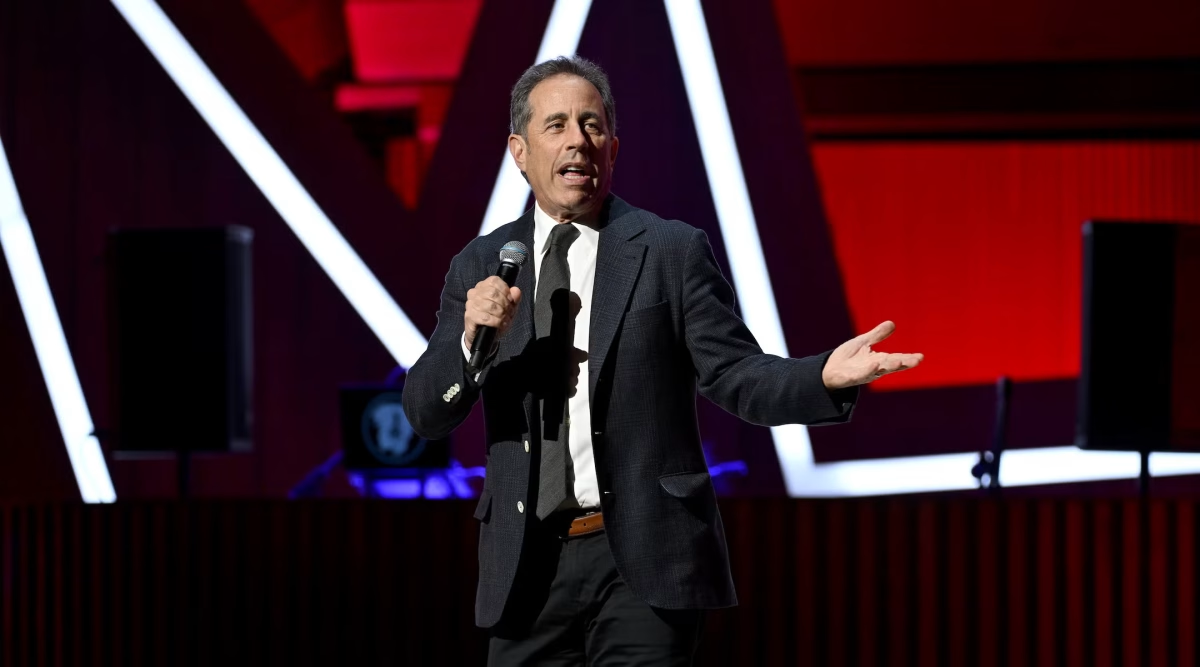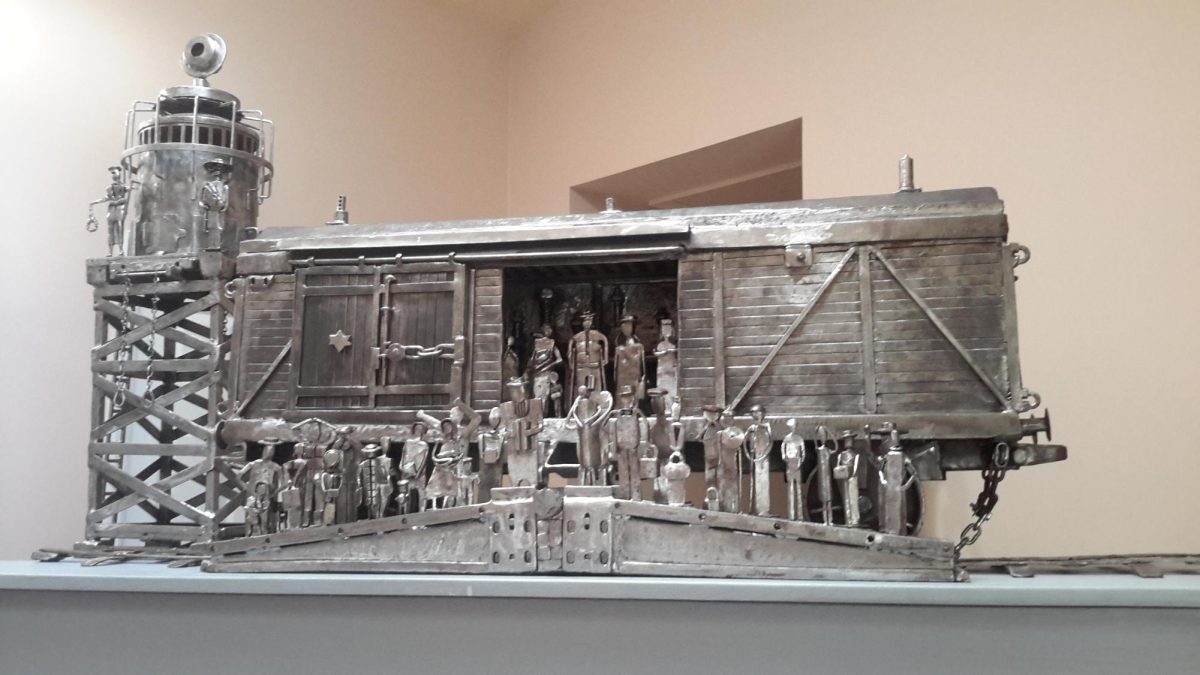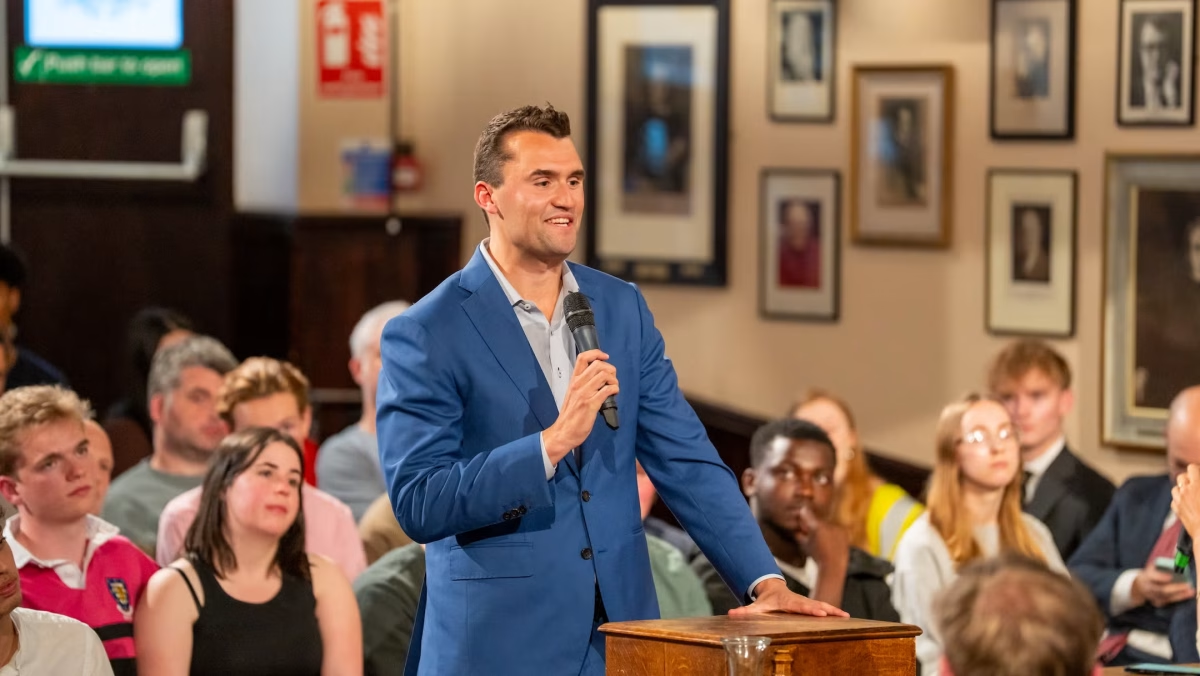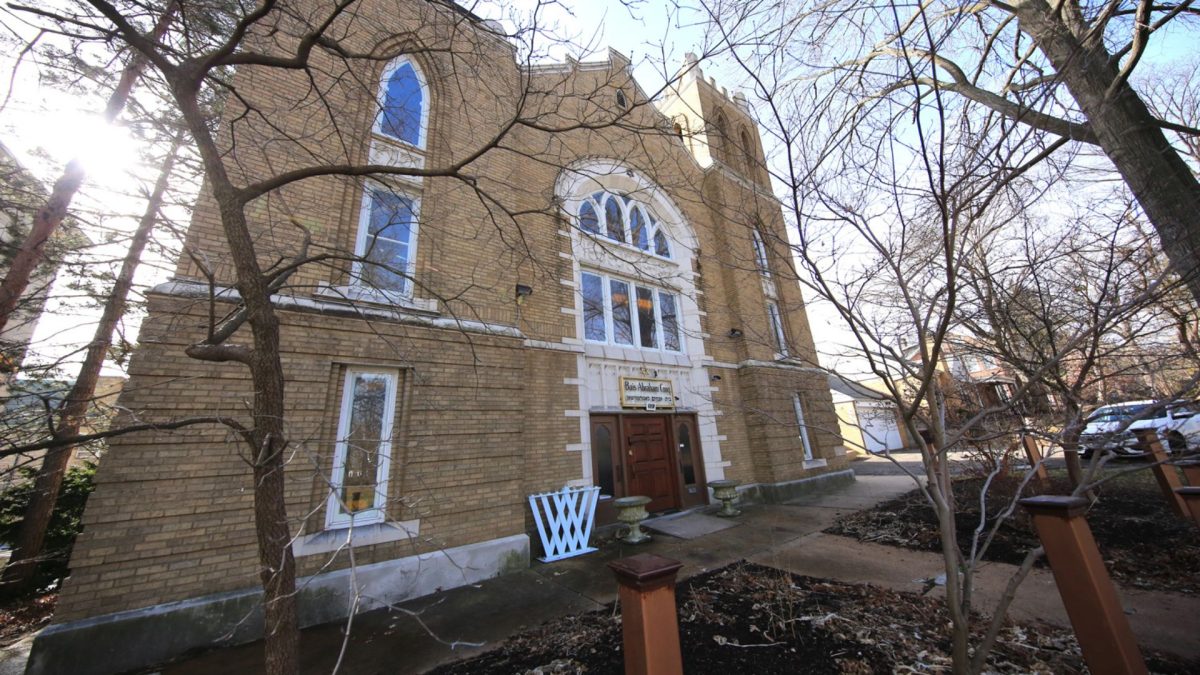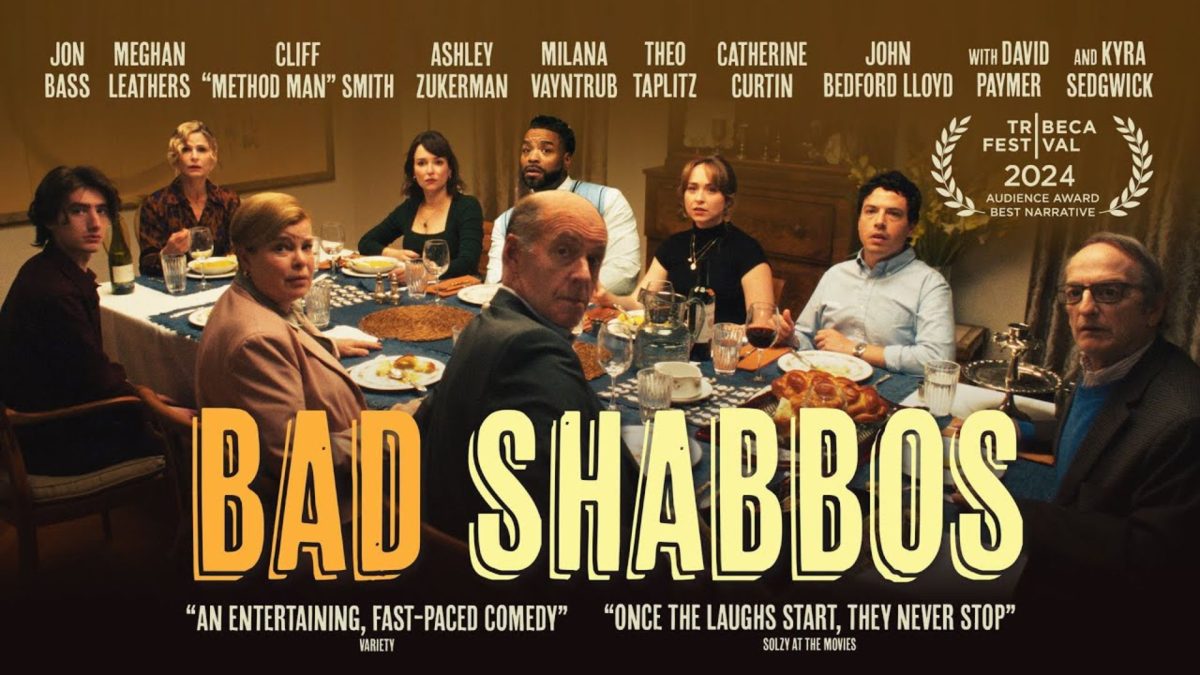Ashley Melton knew choosing the play was a bold decision. After years of directing comedies at Edwardsville High School (EHS), she felt it was time to offer her drama club a different experience, one that would challenge them with a true dramatic work.
What she didn’t anticipate, however, was how deeply a wartime play would affect her students or how it would bring them into a meaningful collaboration with Jewish students from across the river.
“When they first announced we’d be doing ‘Letters to Sala,’ a lot of us didn’t know what it was,” said Bella Eder, a senior and drama club member at EHS. “I looked it up and saw it was about the Holocaust. I got really excited because I am all German and Polish. I wanted to dig into this. We had never done a drama in my four years of high school. I had to audition because I wanted to be in something that was so important.”
ADVERTISEMENT
Based on a true story, “Letters to Sala” recounts the harrowing journey of 16-year-old Sala Garncarz in wartime Germany. Over the course of five years, this young Jewish woman, the daughter of a rabbi, was sent to seven Nazi labor camps. Throughout this unimaginable ordeal, Sala received and carefully preserved more than 350 letters, photographs and documents. These were her lifeline, her only connection to the family and friends she had lost.
Liberated in 1945, Sala eventually moved to the United States as a war bride. For nearly 50 years, she kept the memories of those five years under Nazi control locked away, never speaking of the horrors she had endured. That is, until one summer day, when she approached her daughter Ann holding a red cardboard box that once contained a “Spill and Spell” game.
Handing it to Ann, she simply said, “You should have this.”
Inside, hidden for decades, lay the contents of Sala’s remarkable story of not only survival, but also of finding hope and humanity amid unspeakable horror.
ADVERTISEMENT
“When I read the play, I thought this is such a powerful piece, and it’s something I know my group could tackle,” said Melton, who is theater director at EHS. “We’ve done a lot of comedy the past few years, and a lot of that had to do with world we were in, dealing with COVID and students feeling the aftermath of isolation. They weren’t emotionally ready to dig into a drama.
“But now I felt it was time. It was time to expose our students to a new style of theater that they had not seen or done before.”
Wanting to ‘get it right’
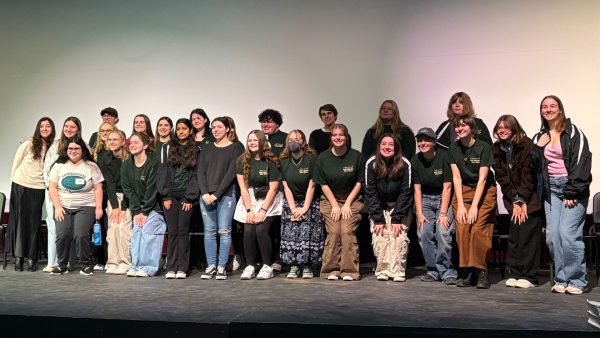
Melton first discovered the play, written by Arlene Hutton, through an online theater educator’s group, where one participant referred to it as a “hidden gem” — a work that had never been produced on Broadway or off-Broadway.
While Melton was intrigued, she knew the material was sensitive and heavy, and she suspected her drama students would have many questions and concerns.
Before rehearsals even began in September, Melton was already determined to give her students a deeper understanding of the subject matter, aiming for a more inclusive and enriching educational experience.
“I was looking for experts in areas of culture, religion, history and language so that I could lean on them when I didn’t have the answer,” Melton said. “I think it’s meaningful to our students to have an adult leader who says, ‘You know what? I don’t have the answer, but I am willing to find it for you.’ ”
She enlisted the help of one of the school’s history teachers to educate the cast and crew about World War II, while a foreign-language teacher assisted some cast members in mastering a German dialect. Though the support was invaluable, the students’ curiosity grew, especially regarding the Holocaust and Judaism. Melton explained that few of the more than 2,500 students at EHS are Jewish, making her students’ desire to learn even more significant.
“In the show, they talk about Passover, and I’d never heard of it before,” said EHS freshman Chloe Kurzym, whose non-Jewish grandfather survived a Nazi labor camp in Poland. Kurzym was one of 110 students from the 200-member EHS Drama Club who contributed to the production, whether as part of the cast, crew, publicity team or house management.
Finding the Jewish connection
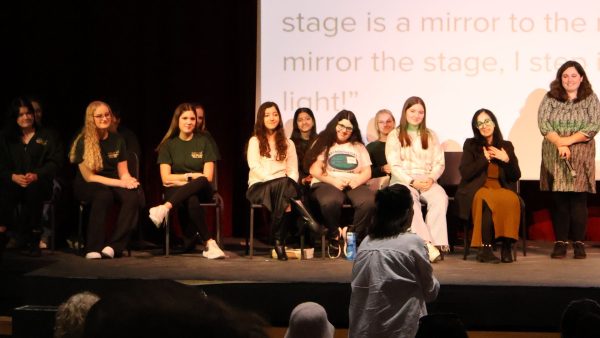
( Photos courtesy JCRC)
Melton reached out to a rabbi in St. Louis but when she didn’t hear back, she dug deeper and asked herself, “Who do I know who’s Jewish?” Then came a lightbulb moment: her college friend Rachel Bray.
“So, I reached out to Rachel and she said, ‘Would you believe this is actually my job — community outreach with the Jewish Community Relations Council?’ ” Melton recalled. “She immediately said, ‘Here are the people who can help.’ ”
Bray put Melton in touch with Lauren Abraham, who oversees the Student to Student program in St. Louis. This 30-year-old educational initiative, run by the JCRC, sends Jewish high school juniors and seniors into schools where students have little to no exposure to Jewish culture. Abraham brought three of her students to Edwardsville — one Orthodox, one Conservative and one Reform — so the cast and crew could ask questions and learn more about Judaism.
In addition, the cast visited the St. Louis Kaplan Feldman Holocaust Museum.
“Witnessing the artifacts and personal stories reminded us of the weight of the history we are portraying,” Melton said.
Passover, gut yontif and other ‘Jewish questions’
Danielle Jackoby, a senior at Kadimah High School who attends both Young Israel and U. City Shul, was one of the Jewish students who visited EHS as part of Student to Student.
“I got questions about my modesty, about how I dress,” she said. “I got questions about being kosher and what I eat.”
Interestingly, Jackoby had attended fifth grade and middle school in Edwardsville before her family moved to St. Louis in search of a larger Jewish community. During their time in Edwardsville, her younger siblings faced antisemitic harassment at school, an experience Jackoby described as “nasty” and “somewhat traumatizing.”
“I didn’t have that myself,” she said, “but I wasn’t expecting things to go as well as they did when I returned to Edwardsville.”
She was pleasantly surprised by the warm and welcoming reception she received.
“I wasn’t expecting the response I got, which was super-friendly,” Jackoby said. “I recognized some of the students I’d known in middle school, and they were so kind to me. It was really amazing to come back and reconnect with them.”
Joslyn Bogner, a senior at Marquette High School who attends Congregation B’nai Amoona, also praised EHS students for their curiosity and enthusiasm.
“Every single member of the drama club was so enthusiastic and engaged and really wanted to learn,” she said. “I expected they’d be interested for the sake of the play, but they were also genuinely interested in what we had to say and asked a lot of great questions.”
Among the questions, Bogner remembered, were ones about Jewish holidays as well as Yiddish expressions used in the play, such as gut yontif, good holiday.
Bogner and Jackoby made sure to see “Letters to Sala” when it was performed at EHS in early November. Both gave the production high marks, not just for the acting but for the authenticity of the sets, props, costumes and more.
Taking it to the community
On Sunday, Jan. 26, Melton and Abraham, along with their students, hosted a panel discussion and Q&A at EHS to share their collaboration with the community. While the event wasn’t widely attended, the roughly 35 people present included both Edwardsville residents and members of the St. Louis Jewish community.
In addition to discussing the collaboration, several cast members performed monologues. Melton spoke about the extensive research the drama students had conducted to ensure the play’s historical accuracy. The audience was shown how costumes were intentionally distressed using cocoa powder on the shoulders, elbows and knees to create an authentic look.
They also learned that Sala’s letters, donated by her family in 2005 to the New York Public Library, were carefully hand-copied by students to further enhance the play’s realism.
To maintain the gravity of the subject matter, war symbols and weapons used in the show were kept securely locked and had to be checked in and out. The armbands featuring swastikas, worn by some cast members as part of their roles, were destroyed after the final performance.
Julie Frankel, who attended the Sunday forum with her husband, Lenny, was thoroughly impressed by what she saw and heard.
“I am amazed by the Edwardsville theater department and the amount of time and research the students put into the play,” said Frankel, an Olivette resident who attends B’nai Amoona. “I was impressed by the whole procedure, from the history department educating (the students) so they had a better understanding, to the collaboration with the Jewish students, to the district allowing the performances, because we learned this is not a play that is often performed. I only wish I had known about it so I could have seen the production in November.”
Reflecting on the experience, Melton said she was most proud of how seamlessly “the educational process and the creative process” came together to produce such a positive result.
“Sometimes in theater, we get so focused on the final product and what’s being put in the spotlight,” she said. “In doing so, we can lose sight of the creative or research aspects of the process, especially when we’re preoccupied with the outcome. But I feel like we really did our due diligence — ensuring we provided a meaningful learning experience while also delivering a groundbreaking show that moved some audience members to tears. It was visually striking and beautifully performed.”
Student to Student is a program of the Newmark Institute at the JCRC.



